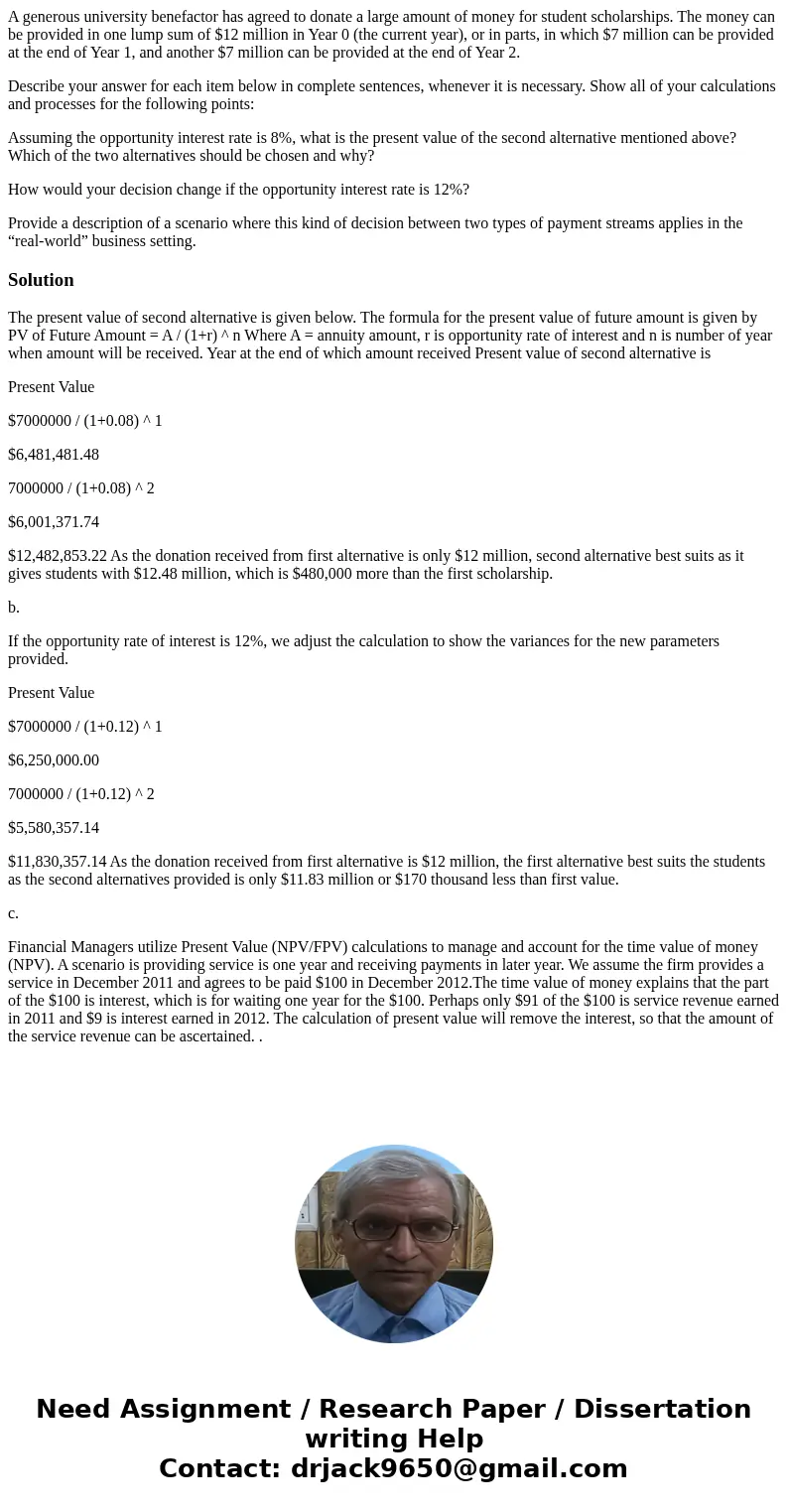A generous university benefactor has agreed to donate a larg
A generous university benefactor has agreed to donate a large amount of money for student scholarships. The money can be provided in one lump sum of $12 million in Year 0 (the current year), or in parts, in which $7 million can be provided at the end of Year 1, and another $7 million can be provided at the end of Year 2.
Describe your answer for each item below in complete sentences, whenever it is necessary. Show all of your calculations and processes for the following points:
Assuming the opportunity interest rate is 8%, what is the present value of the second alternative mentioned above? Which of the two alternatives should be chosen and why?
How would your decision change if the opportunity interest rate is 12%?
Provide a description of a scenario where this kind of decision between two types of payment streams applies in the “real-world” business setting.
Solution
The present value of second alternative is given below. The formula for the present value of future amount is given by PV of Future Amount = A / (1+r) ^ n Where A = annuity amount, r is opportunity rate of interest and n is number of year when amount will be received. Year at the end of which amount received Present value of second alternative is
Present Value
$7000000 / (1+0.08) ^ 1
$6,481,481.48
7000000 / (1+0.08) ^ 2
$6,001,371.74
$12,482,853.22 As the donation received from first alternative is only $12 million, second alternative best suits as it gives students with $12.48 million, which is $480,000 more than the first scholarship.
b.
If the opportunity rate of interest is 12%, we adjust the calculation to show the variances for the new parameters provided.
Present Value
$7000000 / (1+0.12) ^ 1
$6,250,000.00
7000000 / (1+0.12) ^ 2
$5,580,357.14
$11,830,357.14 As the donation received from first alternative is $12 million, the first alternative best suits the students as the second alternatives provided is only $11.83 million or $170 thousand less than first value.
c.
Financial Managers utilize Present Value (NPV/FPV) calculations to manage and account for the time value of money (NPV). A scenario is providing service is one year and receiving payments in later year. We assume the firm provides a service in December 2011 and agrees to be paid $100 in December 2012.The time value of money explains that the part of the $100 is interest, which is for waiting one year for the $100. Perhaps only $91 of the $100 is service revenue earned in 2011 and $9 is interest earned in 2012. The calculation of present value will remove the interest, so that the amount of the service revenue can be ascertained. .

 Homework Sourse
Homework Sourse